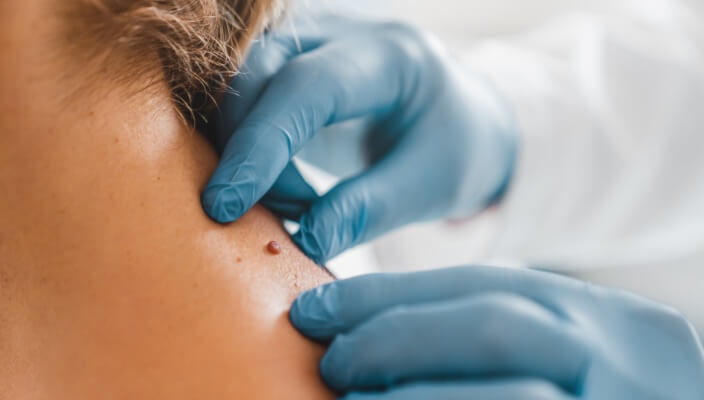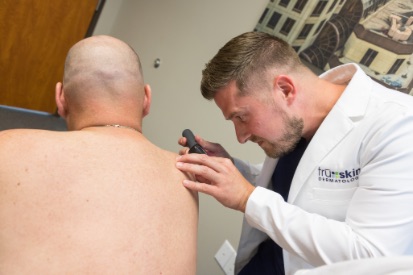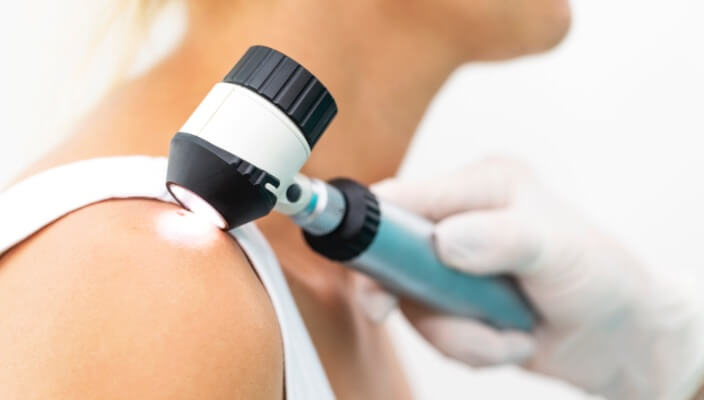The Impact of Sun Exposure on Moles
The Effects of Sun Exposure on Moles: What Austin, TX Residents Need to Know
 If your skin tends to develop moles, you’re not alone. Although a mere one percent of people are born with moles, most people have at least a couple. Some people can even have 40 or more moles, especially if they’re genetically predisposed to their development.
If your skin tends to develop moles, you’re not alone. Although a mere one percent of people are born with moles, most people have at least a couple. Some people can even have 40 or more moles, especially if they’re genetically predisposed to their development.However, genetics isn’t the only factor that affects your likelihood of developing moles. The ultraviolet (UV) rays present in sunlight can encourage pigment-producing melanocytes to cluster together, potentially leading to the development of new moles. These include moles that later turn out to be melanoma.
If you’re worried about one or more of your moles, the skin experts at Tru-Skin Dermatology can determine whether a mole removal or other treatment is necessary. In the meantime, here’s a look at what everyone should know about the connection between moles and sun exposure.
The ultraviolet (UV) rays present in sunlight can encourage pigment-producing melanocytes to cluster together, potentially leading to the development of new moles.
Can Sun Exposure Cause Moles?
Yes, sun exposure can cause moles to develop. Exposure to UV rays causes melanocytes in your skin to produce additional pigment as a defensive measure. The extra pigment helps to protect the skin against further exposure.
An even suntan is one way this additional pigment might express itself. However, you may also develop moles. Moles are more common in some people than others, including those with fair skin, children, and people with relatives who have many moles.
How Else Does the Sun Affect Moles?
The sun can encourage new moles to develop and cause existing moles to change over time. (Hormonal changes can also contribute to this process.)
For example, cumulative sun exposure over the years can trigger appearance changes in a mole. A mole may look one way for years but eventually become darker, paler, flatter, or bumpier. Not all moles that change over time are necessarily cancerous, but it’s important to have them examined regardless.
The more sun damage there is to your skin over your lifetime, the more likely you are to develop both benign and malignant moles. Even one or two bad sunburns can put someone at a higher risk, especially if they’re fair or tend to burn easily.
When Is a Mole Removal Necessary?
Melanoma is one of the most dangerous forms of skin cancer, killing thousands of people every year. However, staying diligent and mindful when it comes to moles and other potential danger signs goes a long way toward keeping you safe and healthy.
A medical professional from a trusted care provider like Tru-Skin Dermatology can assess moles for danger signs and determine whether a biopsy is a good idea. If the biopsy results suggest cancer, mole removal may be in order.
When should you see a professional about a mole? Healthy moles are usually uniform and stable, so monitor yours for warning signs like the following:
Asymmetry
Border
Color
Diameter
If your mole is larger in diameter than 6mm (about the size of a pencil eraser), it’s a good idea to have it examined.
Don’t Wait—Seek Early Detection for Melanoma
When in doubt, check it out. Early detection and treatment can mean stopping melanoma before it progresses and jeopardizes your life. Schedule an appointment at Tru-Skin Dermatology, and let us know how we can help.

Trusted for Skin Cancer Diagnosis & Treatment
At Tru-Skin Dermatology, our expert team is dedicated to providing thorough evaluations and personalized care to ensure your skin health is in optimal condition. By scheduling an appointment with us, you’re taking a crucial step toward safeguarding your well-being and addressing any potential issues before they become serious. Contact us today to book your screening and gain peace of mind with the help of our skilled dermatologists. Your health and safety are our top priorities.
Featured Sunscreens

EltaMD UV Clear SPF 46 original
Oil-free EltaMD UV Clear helps calm and protect sensitive skin types prone to discoloration and breakouts associated to acne and rosacea. It contains niacinamide (vitamin B3), hyaluronic acid and lactic acid, ingredients that promote the appearance of healthy-looking skin. Very lightweight and silky, it may be worn with makeup or alone. Choose from tinted and untinted formulas for use every day. 1.7 oz / 48 g

EltaMD UV Lip Balm SPF 36
This creamy, long-lasting moisturizing sunscreen soothes and protects dry, chapped and sun-exposed lips. EltaMD UV Lip Balm contains 5% Hydromanil™ for immediate and long-term moisturization. Powerful UV protection and a super hydrating power make UV Lip Balm the ideal protector for all skin types and lifestyles.
Related Blogs

- Skin Cancer
Image-guided superficial radiation therapy (IG-SRT) is a non-surgical treatment option for non-melanoma skin cancers. Learn about this treatment offered at Tru-Skin Dermatology.
Read More
- Skin Cancer
- Skin Exams
Skin cancer remains a critical public health issue across the globe, and Texas, with its vast landscapes and relentless sunshine, is no exception.
Read More
- Skin Cancer
- Skin Exams
- Sun Safety
Discover the importance of full body skin cancer screenings, especially for Texans with high sun exposure. Learn what to expect during your screening at Tru-Skin Dermatology in Austin, TX, and take control of your skin health.
Read More


